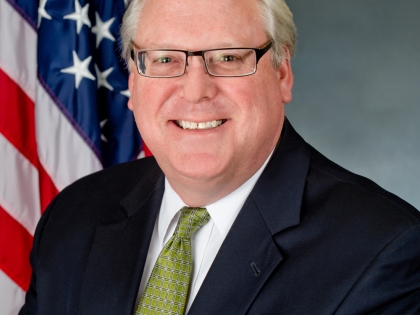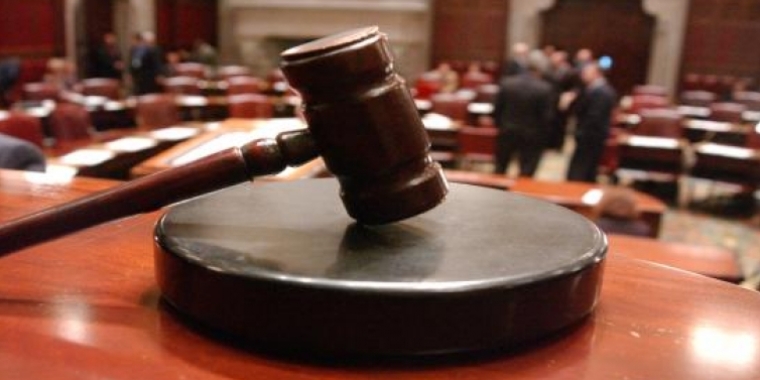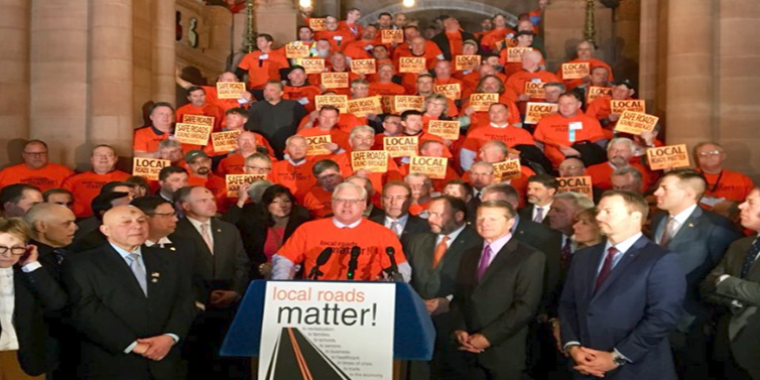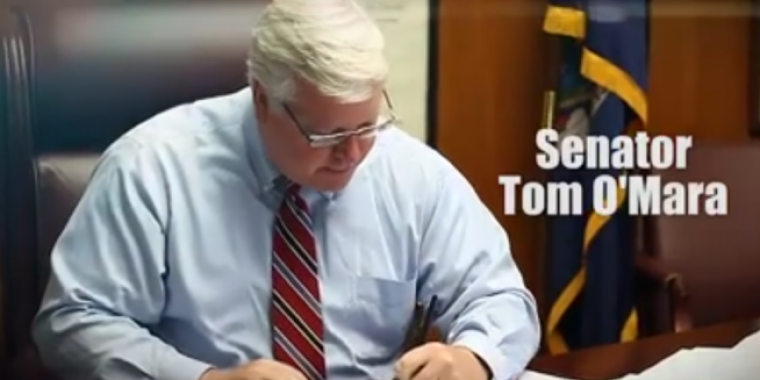
Senator O'Mara's weekly column 'From the Capitol' -- for the week of October 3, 2022 -- 'In uncertain times, Albany keeps delivering uncertainty'
October 3, 2022
-
ISSUE:
- Energy Affordability

Uncertainty that we will ever get this economy turned around.
Senator O'Mara offers his weekly perspective on many of the key challenges and issues facing the Legislature, as well as on legislative actions, local initiatives, state programs and policies, and more. Stop back every Monday for Senator O'Mara's latest column...
This week, "In uncertain times, Albany keeps delivering uncertainty"
It is predicted that we are facing a long, cold, hard winter across the Northeast, and New York’s energy consumers are bombarded with the warning: Expect your heating bills to skyrocket.
Across the upstate region, average residential heating costs are expected to increase up to 50 percent this winter.
Fifty percent.
It’s so concerning that Governor Kathy Hochul saw fit last week to send letters to New York’s largest utility companies urging them to take measures to try to help ease the coming financial storm for the state’s utility customers. State agencies were directed to strategize with the state’s fuel providers to try to ensure adequate supplies of heating fuels this winter.
And, of course, Governor Hochul pointed New Yorkers to programs aimed at adopting energy efficiency and “electrification” solutions for homes and businesses.
The governor said, “New Yorkers should be fully prepared this winter for rising global energy costs as temperatures drop and it takes more energy to heat their homes.”
New Yorkers needing to be prepared might be the understatement of the year for what’s in store for the future under a governor and a one-party-controlled State Legislature -- not just this winter, but for many winters to come if Governor Hochul and her energy czars stay the current course.
Because let’s not forget, there’s plenty more in store for New Yorkers under the Hochul-driven strategy for a rapid restructuring of New York’s energy future.
Let’s not forget that there’s no other action underway in state government that will have a greater impact on our everyday lives.
Governor Hochul can try all she wants to pin the blame on “rising global energy costs,” but it’s her own plan for the state’s energy future that’s equally alarming and troubling
Over the past three years, I have joined many legislative colleagues and others to sound the alarm on the “Climate Leadership and Climate Protection Act” (CLCPA), which was signed into law in 2019 by former Governor Andrew Cuomo and created what’s known as a “Climate Action Council” (CAC) to undertake specific plans to implement the law’s far-reaching goals.
Following Cuomo’s resignation, Governor Hochul took the reins and has not hesitated to move full speed ahead on the implementation of aggressive renewable energy goals through the CLCPA, goals that will come at great cost and consequences for local communities, economies, and residents.
Far too many New Yorkers are still largely in the dark about where it’s all headed. Simply put, it represents a radical remaking of New York’s energy future that will be enormously expensive for state and local taxpayers, especially residential and business utility ratepayers. It’s going to arrive as a great shock.
It remains important for more citizens, communities, businesses, families, and workers to fully understand where New York’s energy future is headed, including in the near future, and to continue to urge a desperately needed rethinking and slowing down of this process.
The Senate GOP has highlighted the plan’s extreme efforts to eliminate reliable, affordable sources of energy. Natural gas hookups and services, as well as those from propane and heating oil, are vital for New Yorkers -- especially in rural communities and during harsh winters -- and cutting off these dependable sources of energy, like Hochul intends to do, would be costly to residents and businesses and ineffective on a global scale.
Furthermore, the plan anticipates job losses and negative impacts to school and local government property tax bases. It anticipates industries being shuttered and subsequent job losses. To help the state afford it, proposals have been introduced that would increase gasoline costs by an additional 55-cents-per-gallon tax and drive up home heating fuel by 26%.
Soon, millions of homeowners could be forced to convert their natural gas, propane, or heating fuel oil furnaces to electric at estimated costs of as much as $40,000 per household. In just five years, 2027, you will no longer be able to build a new home or building in New York State with a natural gas, propane, or fuel oil furnace or boiler.
I have fully encouraged New York’s past efforts to increase cleaner and renewable power, and we have, to the point where we are already a national and worldwide leader in this arena. We already account for just 0.4% of global carbon emissions. It’s already an admirable accomplishment in a state as large as New York. Nevertheless, the CLCPA applies only to New York. It will have no bearing on the actions of neighboring states or, even more critically, to China, India, or Russia, which account for 40% of global emissions.
In other words, even if New York State does reach zero emissions, there will be zero impact on our own climate or the global climate at large -- yet it will still fall on all New Yorkers at a heavy price.
“Before the state gets itself into a position where it risks not having sufficient electricity to meet demand, we need to pause and act cautiously. New York’s Climate Act may be well-intended, but it is short-sighted, and creates great risks for the people of the Empire State,” wrote James Hanley of the Albany-based Empire Center, in a study released earlier this year detailing the risks posed by the CLCPA, including how thousands of New Yorkers could be left without reliable sources of heat and power at times when they need them most.
Last week, Hanley noted a just-released assessment from the New York State Independent Operator (NYSIO) showing that “the future is not bright for the Empire State’s electrical power grid.”
It continues to be a sobering analysis that points to unsustainability, overly ambitious goals, and an unworkable timeline.
“As the Empire State tries to transform its grid to zero-emission electricity production by 2040, it will face three serious problems: a need for an unprecedentedly rapid buildout of wind and solar power; a critical reliance on energy sources that are not yet economically viable; and severe transmission congestion,” Hanley states. “Natural gas plants constitute almost half of current capacity, and because they are required to shut down, NYISO predicts that over 95 gigawatts of new -- emission-free -- energy production must be built in only 18 years. And at least 20 gigawatts of that needs to be built in the next seven years.”
At the very least, these ongoing analyses continue to stress what is shockingly missing from New York’s planning: a fuller discussion of what these actions potentially mean in the important context of feasibility, affordability, and reliability. At a cost of hundreds of billions of dollars to New Yorkers and untold costs to the economy, we are barreling full speed ahead to further crush the affordability of living for families, drive up the cost of doing business, and destroy economic opportunity.
In its recent assessment, NYSIO concludes, “Future uncertainty is the only thing certain about the electric power industry.”
Following up on the NYSIO warning, Hanley adds, “New Yorkers deserve better than uncertainty. Natural gas was once pitched as a bridge fuel between coal and emission-free electricity. Now some want to burn that bridge while we’re still crossing it.”
New Yorkers do deserve better, but uncertainty is all that we’re getting out of Albany.
Uncertainty over crime and public safety.
Uncertainty about the future of agriculture and farming.
Uncertainty that we will ever get this economy turned around.
New Yorkers across the Southern Tier and Finger Lakes regions I represent, and statewide, are worried about making ends meet. They see this state becoming less safe, less affordable, less free, less economically competitive, less responsible, and far less hopeful for the future.
###
Share this Article or Press Release
Newsroom
Go to Newsroom


